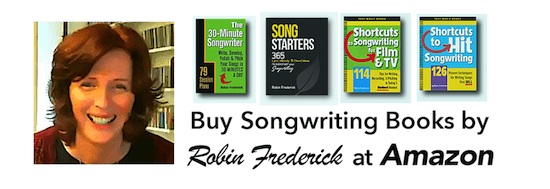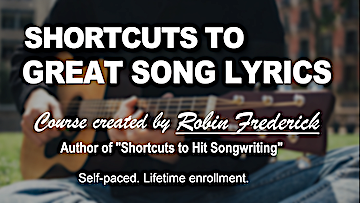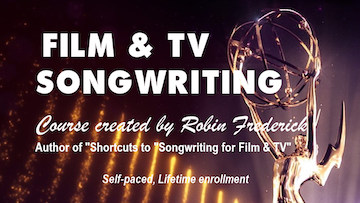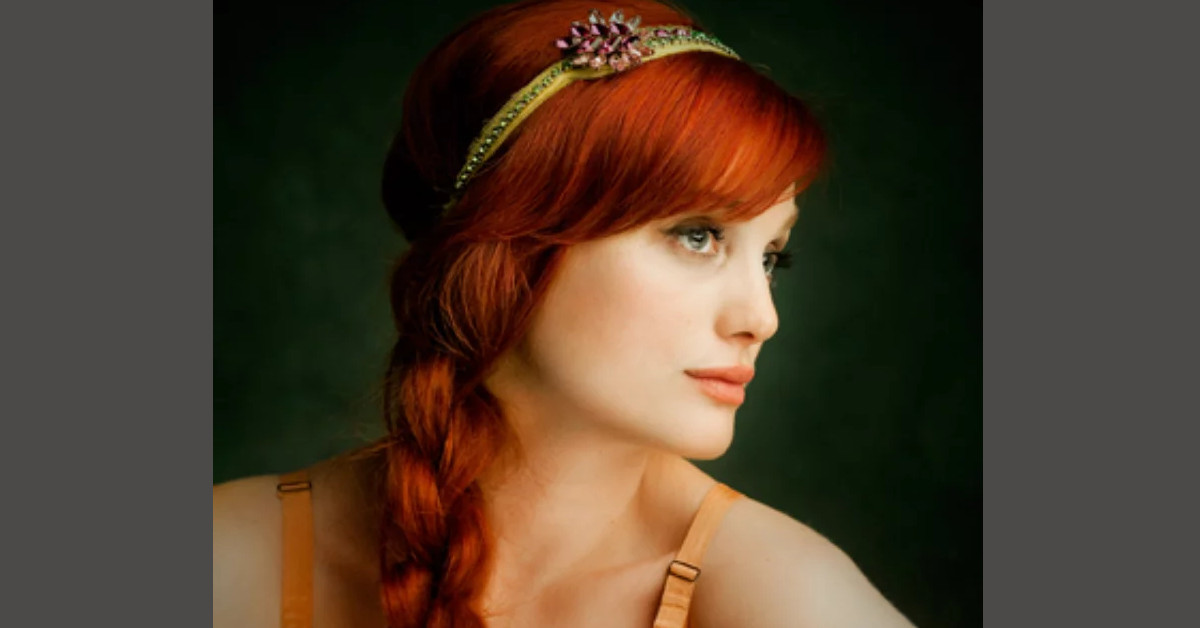
This song by A Fine Frenzy is a big favorite among fans of the youthful, star-crossed romantic singer-songwriter style. It’s a perfectly cut gem of a song with a personal, yet accessible lyric and a melody that gets stuck in your head. It’s worth studying to learn how to write very personal lyrics that connect with listeners and create melodies that keep a slow-moving ballad compelling.
Moody, introspective songs like this one work well for film & TV. Songs by A Fine Frenzy have been featured in CSI:NY, Parenthood, House, The Vampire Diaries, Army Wives, and many, many more.
“Almost Lover” – A Fine Frenzy
Songwriter: Alison Sudol
TECHNIQUES TO HEAR AND TRY:
• Your melody can keep a slow ballad moving forward.
• Use all the physical senses in your lyric and engage the listener.
• Write a song that will work for Film & TV.
Listen to the song. Read the lyrics.
Watch the video on YouTube.
Read the lyric here.
The Shortcut numbers refer to specific chapters in my books Shortcuts to Hit Songwriting (“Hit”) and Shortcuts to Songwriting for Film & TV (“Film/TV”).
GENRE/STYLE (Singer-Songwriter)
(What is a genre? Watch this video.)
This solo Singer-Songwriter style has become so widespread, it’s often thought of as a genre of its own. This intimate song style features the vocalist front and center with fairly minimal backup instrumentation. The lyrics are personally revealing and emotional. Listeners feel that the singer is speaking honestly about his or her life experiences.
While these songs don’t generally reach #1 on the music charts, they’re a big favorite with Film & TV music supervisors. This one did well enough to launch the artist’s career and build a fan base that came to her live performances. Then TV placements continued to build career momentum. This combination of breakthrough single, touring, and Film & TV use is an ideal way to build a career as a solo singer-songwriter.
SONG STRUCTURE
The song structure is:
VERSE / PRE-CHORUS / CHORUS
VERSE / PRE-CHORUS / CHORUS
BRIDGE / CHORUS
The chorus begins with the title line: “Goodbye my almost lover” which is the hook and includes the title, a great way to fix the title in the listener’s mind.
The pre-chorus consists of just two lines: “I never want to see you unhappy / I thought you’d want the same for me.” The second pre-chorus is a repeat of the same lyric. While repeating a pre-chorus lyric is done in some successful songs, make sure that it’s a lyric that’s worth repeating. Here, it sums up her disappointment and surprise that the lover has let her down, an idea that’s central to the song’s theme.
The bridge begins with the line: “I cannot go to the ocean…” The melody and lyrics provide a peak moment reaching for the highest notes of the song, then plunging to the darkest line: “And I’ll bet you are just fine.”

LYRICS
USE THE PHYSICAL SENSES: Right from the first line of the song, we get an insider’s experience of this relationship. “Your fingertips across my skin” conveys a physical sensation that every listener can actually feel. Palm trees and Spanish lullabies let us hear the whispery wind and voice. Then there’s an emotional description of a face. (“The sweetest sadness in your eyes.”) This verse is a great example of imagery. Imagery is more than just visual images; it’s anything that helps the listener imagine the world of the singer.
This type of writing draws the listener into the song and lets them experience what’s happening right along with the singer. It focuses on a single emotional moment in the singer’s life, the moment she realizes this relationship is over. It’s a great example of a “universal lyric” (Read “Film/TV” Shortcuts #47 through #49).
DEVELOP THE SITUATION: The job of the pre-chorus is to build anticipation and energy going into the chorus. This pre-chorus does that and more. Up until now, we’ve been treated to what could be a nice little romance, but the lines “I never want to see you unhappy / I thought you’d want the same for me” let us know there’s trouble in paradise.
Why doesn’t he want her to be happy? What’s wrong? Now, we’re looking ahead, anticipating the chorus, expecting an answer. That’s exactly what a good pre-chorus should do: Build anticipation and make us want to hear the chorus.
GIVE YOUR CHORUS A STRONG: This chorus opens with a poetic image: “Goodby my almost lover.” But what if listeners don’t know what an “almost lover” is? What if they miss the opening line? It’s often a good idea to follow an opening chorus line with a second line that restates the idea in a different way, adding more weight and giving listeners more information.
Goodbye my almost lover
Goodbye my hopeless dream.
Later in the chorus, she calls him her “luckless romance” and we find out how the singer is dealing with the situation. She tries not to think about him, she turns her back on him. There’s a strong sense of disappointment and a hint of anger. She blames herself for believing he’d stick around. It’s an emotion and situation most listeners can relate to.
If listeners missed the first verse, they’ll still get a clear picture of what’s going on and the singer’s feelings about it right there in the chorus. Don’t assume listeners will hear your song from beginning to end. Many times they’ll start listening somewhere in the middle. Give them something that engages their interest in every section of your song so they’ll stick around.
WRITE A STRONG PAYOFF LINE: The final line of the chorus is the payoff line. Think of it as a kind of punchline. It needs to pay off for the listener, delivering the song’s most important thought or feeling in a single phrase. This one does not disappoint.
Shoulda known you’d bring me heartache
Almost lovers always do.
The listener can’t argue with that. It’s a statement of emotional truth. It also has a lovely symmetry about it with “almost” and “always” echoing each other. It’s a powerful way to end the chorus, making listeners feel they’ve arrived at an insight and caught a glimpse of a deeper idea about lost love.


MELODY
The important thing to learn from this melody is how to keep a slow ballad moving forward. Ballads can be deadly—especially one with bare bones production, like this one—if there isn’t enough going on in the melody to keep listeners interested. A slow melody with long pauses between lines and predictable phrasing allows listeners to tune out… and they will.
VERSE MELODY: The verse consists of two long lines, each one followed by a pause. But within each of those long lines are shorter, repeated phrases: Your fingertips / across my skin / The palm trees swaying in the wind…
These shorter phrases start on weak beats and end on strong ones—which is the opposite of what we expect. It gives the melody an unexpected feel that keeps listeners a little off balance. (For more on weak beats, strong beats, and phrasing, see “Hits” Shortcut #92.)
PRE-CHORUS MELODY: The pre-chorus breaks out of the pattern of short phrases to underscore a longer statement in the lyric. The melody in the second line descends, creating a moment of sadness and resignation on the line “I thought you’d want the same for me.” It’s just the way we would say something like that. It feels conversational and believable. For an emotional line like this, it’s a great idea to use the natural melody of speech.
CREATE CONTRAST BETWEEN SECTIONS: Each of the sections in a song has its own identifiable melody. It helps listeners know where they are and anticipate what will come next. We often create contrast and increase the energy in a chorus by raising it to a higher note range. But this song doesn’t have big changes in note range, so how does the songwriter create contrast?
⁃ She uses longer phrases in the chorus than in the verse.
⁃ There are very short or no pauses between lines in the chorus
⁃ All the lines in the chorus begin on the “and” after Beat 1.
By starting all the lines on the same unusual beat, she creates an easily recognized pattern that is different from the other sections. Melody patterns are very important to listeners—they can make the melody easier to remember (that “catchy” quality). By eliminating pauses, the melody creates forward momentum, avoiding the slow, draggy feeling that dogs so many ballads.
Find out more about using contrast.
CHORDS
The chords also help to create contrast in this song and are an important part of the ambivalent mood that swings from sorrow and loss to poignant nostalgia.
The verse rocks back and forth between minor and major, setting up a primarily minor feel. | Am | F |
Then the pre-chorus suddenly emphasizes the major feel: | G | C | Dm | G |.
The chorus moves even further toward major feel. | C | G | Dm | F |
then | C | G | Dm | F | C |
The bridge is a simple descending chord pattern: | Am | G | F | Em |
then | Am | G | F | Dm | G |
Listen and play along with the track to hear how the chords fit in.
This Youtube Video will show you how to play it on piano.
Try It Now
This is an easy chord progression to play. Learn to play and sing this song to get a feel for the phrasing, especially the differences between the verse and chorus.
For songwriting practice in this style, write a rough lyric of your own to the verse, pre-chorus, and chorus melodies of this song. Get a feel for how your lyrics sound with a contemporary singer-songwriter ballad like this one.
